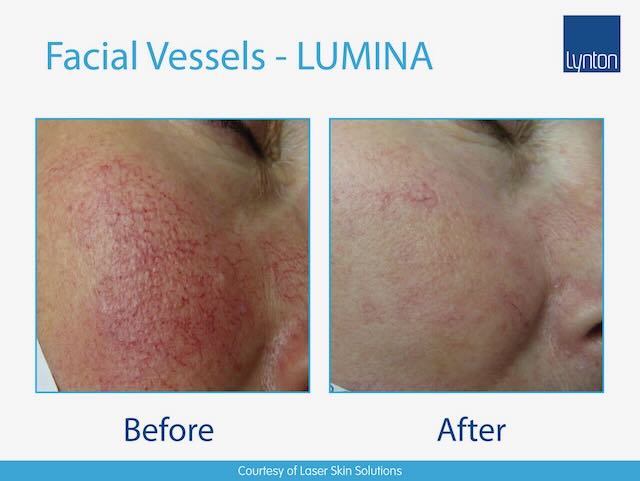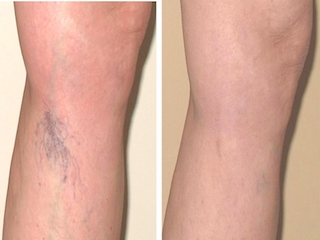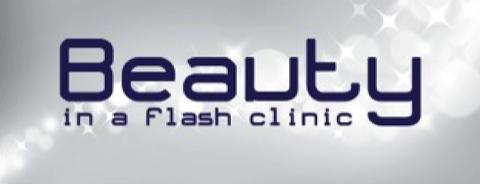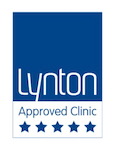Thread vein Treatment Clinic worcester.
Summer's coming and if the thought of shedding trousers and showing your legs fills you with dread, take heart. There are treatments that can dramatically improve the appearance of unsightly thread veins.
What are thread veins? Thread veins are tiny blood vessels which run close to the surface of the skin and look like fine red, or sometimes purple, wiggly lines. They're also sometimes called 'spider veins' or 'broken veins', although the veins aren't infact broken but only slightly enlarged. The medical term for them is telangiectasia.
What causes them? Usually there's no obvious cause. Thread veins tend to develop as we age and our skin and blood vessels become less elastic. Hormonal changes associated with pregnancy and the menopause are thought to provoke their development - the reason why women are more prone to them than men.
You can also inherit a family tendency to the problem. Other causes include too much sunbathing, exposure to wind or extreme temperatures, cortico-steroid medicines and radiotherapy. Jobs that involve prolonged standing may aggravate the condition, but they don't actually cause it. Although you may not like the look of them, thread veins aren't dangerous, but they tend to become larger and increase in number over time.

Who gets them? Nearly all of us as we age, apparently. Around one in five women in their 20s have thread veins, a figure that rises to around half by the age of forty and continues to increase. By the age of 70 over 70 per cent of women have some thread veins.
The Beauty In A Flash Clinic advises treatment sooner rather than later. 'Smaller thread veins are easy to treat. Later on they can be more difficult. Younger women could save themselves a great deal of time, trouble and expense if they opted for early treatment.'
The Beauty In A Flash Clinic advises treatment sooner rather than later. 'Smaller thread veins are easy to treat. Later on they can be more difficult. Younger women could save themselves a great deal of time, trouble and expense if they opted for early treatment.'

At an initial consultation your veins will be assessed and you'll be advised which form of treatment is most appropriate for you. Normally a test patch will be done at the same time.
Is the treatment painful? It shouldn't be. Although laser destroys tissue by heat you won't feel any burning or pain. Each pulse is less than a thousandth of a second and the laser only works on the unwanted vein leaving other skin untouched. The sensation of a laser is often described as similar to a rubber band pinging against your skin.
Treatments normally last for around 15 to 60 minutes.
Are there any after effects? With Laser Treatments the veins may appear worse immediately after treatment, There may also be some bruising and sometimes the treated area may itch a bit. After a week or so the veins should begin to fade and they'll continue to do so for up to eight weeks, or even longer for bigger veins.
How many treatments are needed? On average three, but more may be necessary, depending on the number of veins and their size and location. The normal procedure is to tackle the larger veins first with the Yag Laser and then clear up the smaller ones with IPL laser treatment. Treatments are spaced about Four weeks apart. Start now if you want better looking legs this summer.
How successful is it? You need to have realistic expectations. 'Some thread veins can be quite difficult to treat because they don't always run obligingly parallel to the skin surface, 'Some are like big dippers they go up and down and a laser light doesn't always reach deeply enough to destroy them.' Veins in the lower part of the leg, particularly the ankle area, are more difficult to treat than those on the thighs. It's not normally possible to get rid of all the veins, but around 90 per cent clearance is common.
Are thread veins related to varicose veins? They are part of the same spectrum of problems caused by blood pressure in the superficial veins of the legs being too high. If you have varicose veins you are more likely to have thread veins too, but the reverse isn't true, having thread veins doesn't predispose you to varicose veins. 'In women with big varicose veins there's no point treating thread veins until the varicose veins have been sorted out. 'They need doing first otherwise the treatment for thread veins won't work.'
What about treatment for broken veins on the face? IPL & Yag Lasers can treat the very fine veins that can appear on the nose, cheeks and chin and it's usually very successful. Often thread veins on the face are part of a condition called rosacea.
Are thread veins related to varicose veins? They are part of the same spectrum of problems caused by blood pressure in the superficial veins of the legs being too high. If you have varicose veins you are more likely to have thread veins too, but the reverse isn't true, having thread veins doesn't predispose you to varicose veins. 'In women with big varicose veins there's no point treating thread veins until the varicose veins have been sorted out. 'They need doing first otherwise the treatment for thread veins won't work.'
What about treatment for broken veins on the face? IPL & Yag Lasers can treat the very fine veins that can appear on the nose, cheeks and chin and it's usually very successful. Often thread veins on the face are part of a condition called rosacea.

